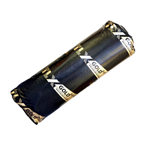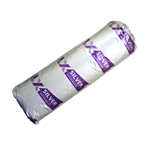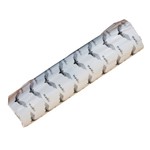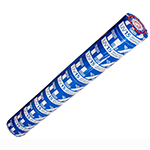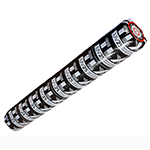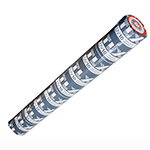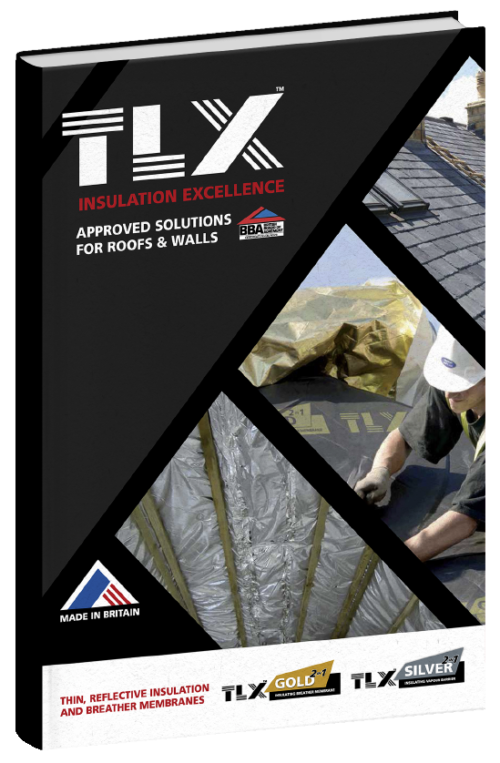How to Insulate a Timber Frame Wall with TLX Silver
TLX Silver multifoil insulation is a simple, easy and effective way to insulate
a timber wall frame.
Insulation is essential when constructing a timber wall frame and serves a
multitude of purposes. Not only will the right insulation insulate your home, helping it to maintain a comfortable temperature, but it will also help to soundproof your walls.
But how do you insulate a timber frame wall with TLX Silver? What are the
benefits of using this type of wall insulation? Here’s everything you need to know:
U-Value Requirement for Timber Frame Walls
TLX Silver uses its multifoil layers to provide an air-tight vapour barrier and restricts air movement, which guarantees high performance. It is both energy-saving and cost-effective. One of the main reasons TLX Silver is so highly regarded as a wall insulation solution is because of the U-Values it can achieve.
TLX Silver is best used in conjunction with other forms of insulation, and this is how the lowest U-Values can be achieved. For an existing timber frame wall, you can achieve a U-Value of 0.30 W/m²K by fully filling a 90mm stud with low-grade (0.040 W/m²K) mineral wool, with TLX Silver on the inner face secured with a 38mm deep batten.
As building regulations become stricter, required U-Values become lower and harder to achieve. For new elements in existing dwellings, the minimum U-Values are currently: Roofs: 0.15 W/m²K. Walls: 0.18 W/m²K. Floors: 0.18 W/m²K.
That means the minimum U-Value requirement for timber frame walls is 0.18 W/m²K. The best way to achieve this is to combine a multifoil wall insulation, such as TLX Silver, with another form of insulation.
Timber frames can be insulated in many ways, but the most common way to insulate a timber frame wall, and the route considered to be best practice, is to combine a multifoil insulation layer with a foil-faced foam board or a glass or mineral-based wool insulation.
Minimising the Insulation Build up
Foam board insulation and mineral wool insulation are both incredibly bulky insulation solutions. Whilst they can be independently successful at insulating a timber frame wall, the result is an insulation layer that is too thick. In fact, no matter how thick the layer of insulation you use, the use of PIR board or mineral wool between the studs provides an effective thermal benefit. This is where TLX Silver multifoil insulation can be so helpful. Because it is so thin, multifoil wall insulation can be used in conjunction with other forms of insulation to lower U values and minimise insulation build up.
This is particularly useful if you’re looking for a space-saving solution, and are building in a compact property where space is of the essence. It’s also important to note that older timber-framed homes can be draughty and difficult to insulate. You may find you need to use more insulation layers to fill the available space.
The good news is that timber frame walls are among the most forgiving for the addition of insulation, which is installed between the studs. Multifoil insulation can then be fitted to the front face of the timber studs, just before the plasterboard.
Space Saving Insulation With TLX Silver
One of the best things about using TLX Silver is just how easy it is to install. TLX Silver
is installed by simply rolling the sheets of the multifoil insulation out across the front face of the timber studs. Once the insulation is in the right place you would then secure it in place with battens. Additional insulation such as mineral wool or PIR board can be fitted in between the studs if additional insulation is needed.
Mineral wool and PIR board can be bulky, and certainly shouldn’t be used in isolation if you are looking for a space-saving insulation solution. By contrast, TLX Silver is a thin, flexible, multifoil insulation which is 30mm thick.
The Importance of Air Gaps
When insulating cavity walls in a timber frame construction, it is important that you choose an insulation material that will retain an air gap between the insulation layer and the outer leaf of the wall. One of the main reasons that this air gap is so important is to prevent the risk of condensation forming in the cavity. This is a real risk when some wall insulation methods are used but is not a concern when correctly installing TLX Silver multifoil insulation.
Condensation is the mortal enemy of the timber frame wall. This is because condensation can lead to water forming within the structure. Damp can attack the wood fibres, weakening them and allowing microbes to start digesting the wood itself. The result of this process is rot, which is a serious issue as it can damage the structural integrity of the building, causing the wood to crumble and weaken, and ultimately meaning that elements of the structure could collapse.
condensation can lead to water forming within the structure. Damp can attack the wood fibres, weakening them and allowing microbes to start digesting the wood itself. The result of this process is rot, which is a serious issue as it can damage the structural integrity of the building, causing the wood to crumble and weaken, and ultimately meaning that elements of the structure could collapse.
Buildings that have poorly insulated walls are more prone to suffer from condensation and damp, and this can be most destructive to timber-framed properties.
With energy prices soaring right now, it’s important to choose an insulation solution that is as effective as possible. Once you have added TLX Silver multifoil insulation to your home, you’ll enjoy maximum energy efficiency. This solution will help you to achieve very low U-Values, especially when used as part of a hybrid system with additional insulation such as mineral wool or PIR board. In real terms, this means that your home will experience less loss of heat, and it will cost less to heat your home.
Do you require a bespoke solution or advice?
We would love to hear from you. Our helpful team of product experts are on hand to help with bespoke solutions and U-Value calculations. Simply call +44 (0)1204 674 730 today.
Sample Pack Request
Error: Contact form not found.

